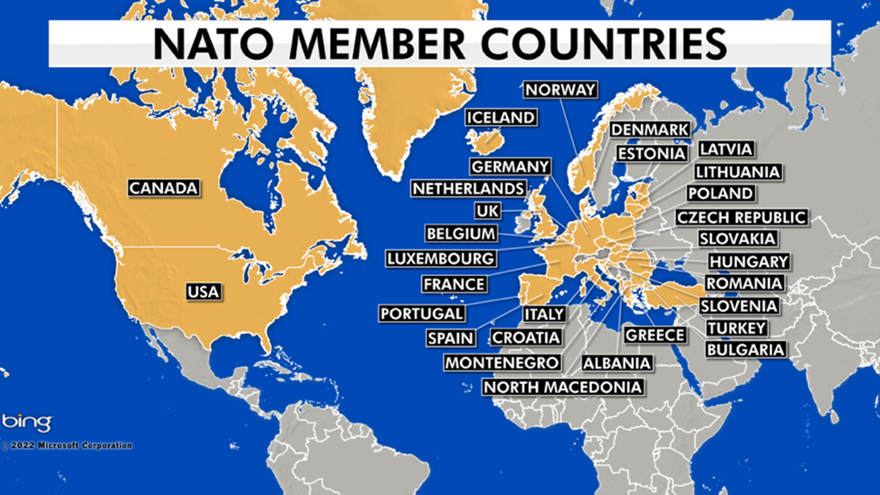Monday, 23rd May 2022
Demand for a ban on cotton exports
In News
Union Textiles Minister recently convened a meeting of cotton traders, millers and garment manufacturers to discuss the spiraling prices of cotton. Raw cotton prices have almost doubled compared to last year.
Reasons for the price rise
- Lower production: In 2020-21, India’s total cotton lint fibre output was 353 lakh bales (lb) of 170 kg each. For the current year, the Cotton Association of India (CAI), has estimated production to be lower than its previous estimates.
- International Prices: The Cotlook ‘A’ Index price – an average of representative quotes in the Far East destination markets – is currently ruling at 167 cents per pound, up from 92 cents a year ago.
- High global prices have made exports attractive but have pushed up domestic prices closer to export parity levels, while simultaneously making imports more expensive.
- Consumption: The state-owned Cotton Corporation of India (CCI) has projected that the total domestic consumption for 2021-22 is higher than previous three years due to pent-up demand of the pandemic.
Reasons for low production
- Since 2002, with the introduction of BT cotton, India's production has risen from 136 lb to 398 lb between 2002-03 and 2013-14.
- Over a period, Bt cotton has become increasingly susceptible to pink bollworm and white-fly insect pest attacks, and the government does not permit testing or commercialisation of next-generation transgenic breeding technologies.
- The crop was also affected by unseasonal rains in November-December, which affected yields as well as quality of the bolls.
- Cotton is generally harvested over three or even four pickings, with the first one in October-November and the subsequent ones every following 20-30 days.
Way Forward
- The Centre slashed the import duty on cotton from 11% to nil.
- Given the anyway lower exports and duty-free imports – which have for now been allowed until September 30, before the next marketing season – there may be no strong case for an outright ban on shipments.
- Further, with domestic prices already rising to international parity levels, exports would slow down in the natural course.
- An export ban may not impact farmers, as they have already sold their crop.
- However, a ban can also send wrong signals ahead of the planting season, which will take off next month with the arrival of the southwest monsoon rains.
Sources:
Chief of Defence Staff
In News
The government has been reassessing the concept of the Chief of Defence Staff (CDS) and the Department of Military Affairs (DMA) to fix overlaps in the system and to streamline the process that has been hampering the appointment of a new CDS.
Why is there a reassessment?
- The Government, based on its experience so far, is of the view that appointment of CDS in itself wasn’t enough and that there are lot of issues related to equivalence of status, responsibilities etc.
- There is also a dichotomy in the roles and responsibilitieswith the several hats worn by the CDS and also overlap in responsibilities between the Department of Military Affairs (DMA) and the Department of Defence (DoD).
- Currently the CDS does not have operational role but as the Chairman CoSC, the theatre commanders to be appointed in future are to report to him.
- There is also a rethink on the ambitious timelines set for the creation of Theatre Commands and also the number of commands and their envisaged format.
- Possible way ahead: A CDS with operational powers who after due legislative changes should have theatre commanders report to him while the Service Chiefs will look after the raise, train and sustain functions of respective Services.

Source:
- Back to the drawing board on role of Chief of Defence Staff
- Chief of Defence Staff and top-level military reforms
- Appointment of CDS: Back to the drawing board
Image source:
Biological Diversity (Amendment) Bill, 2021
In News
Members of a JPC have recently highlighted some problems with the Biological Diversity (Amendment) Bill, 2021
About the News
- The Ministry of environment had proposed a bill to amend the Biological Diversity Act, 2002 in order to simplify compliance requirements for domestic companies.
- The bill was then referred to the Joint Parliamentary Committee (JPC) for review and one of its members has raised objection to some of its provisions.
- The bill has been criticised for bringing significant relaxations in regulation of biological resources and the associated knowledge besides leaving adequate scope for wide interpretation and assumptions which may defeat the original intent of the Act.
- The Biological Diversity Act, 2002 was framed to give effect to the United Nations Convention on Biological Diversity (CBD), 1992.
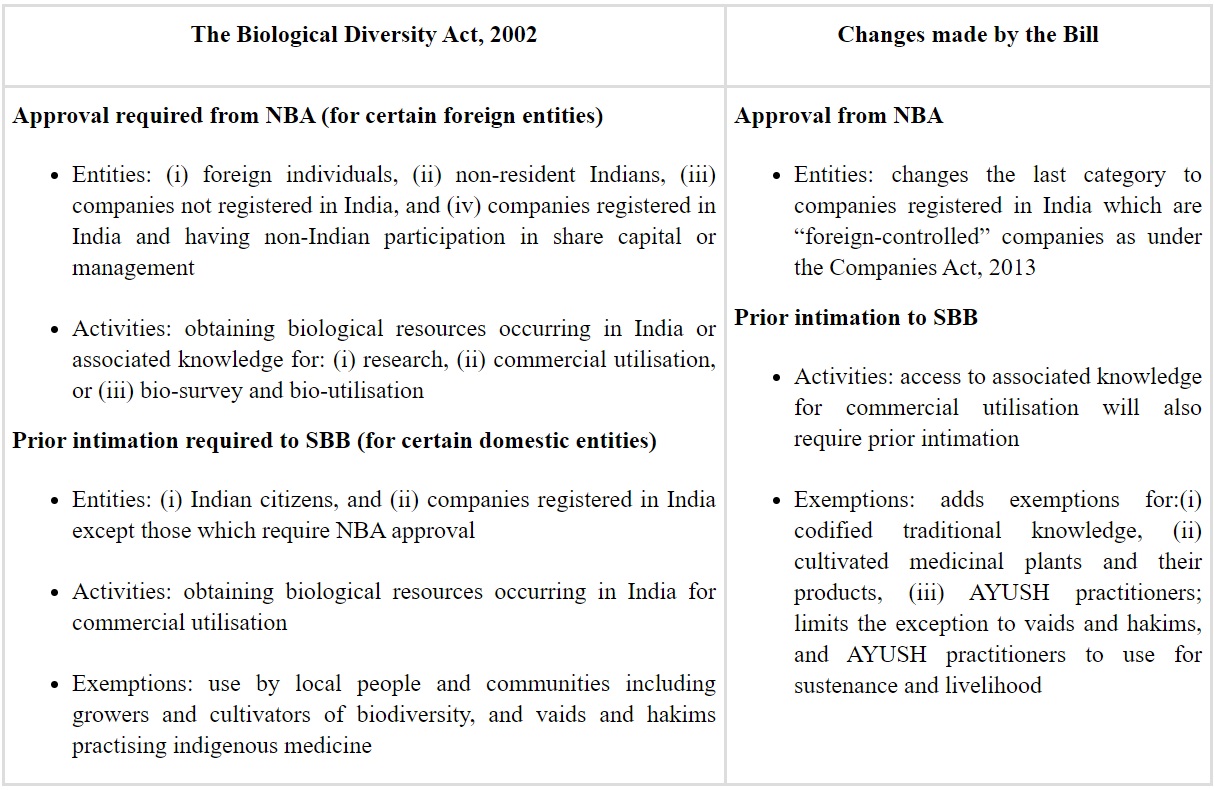
What are the various components of the Bill?
- About: The proposed Bill improves upon the Act by acknowledging the Nagoya Protocol on access to genetic resources and fair and equitable sharing of benefits arising from their utilisation, 2010, in addition to the parent conventione., the Convention on Biological Diversity.
- Role of local bodies: The Bill also proposes increased involvement of local bodies in certain provisions.
- New definitions: The bill has added definitions for certain important terms such as ‘access’ and replacing the term ‘equitable’ wherever used in the Act with the term ‘fair and equitable’.
- Bridging the gaps: Benefit sharing will be based on terms agreed between the user and the local management committee represented by the National Authority.
What are the major issues with the bill?
- Ambiguity with terms:
- Removal of the term ‘bio-utilization’ from the Act: It creates ambiguity as to whether access of biological resources (or associated traditional knowledge) for the purposes of ‘characterisation, inventorisation and bioassay’ would be regulated anymore.
- Conflicting definitions: The bill has proposed definition of ‘foreign-controlled company’ as any entity incorporated or registered in India but if it is when read with Companies Act 2013 creates confusion.
- Lack of clarity: The Bill gives certain exemptions to AYUSH practitioners from seeking prior authorisations and sharing benefits. However, the scope of the term ‘AYUSH practitioners’ is not clearly defined.
- Weakened regulation: Since companies which are not foreign-controlled companies have been exempted from seeking the approval of National Biodiversity Authority (NBA) for accessing biological resources, it may exclude a large number of bodies from the regulatory purview of the Act.
- Traditional knowledge: The Bill provides for certain exemptions with respect to ‘codified traditional knowledge only for Indians’. The scope of the phrases ‘codified traditional knowledge’ and ‘only for Indians’ should be clarified to ensure there are no deviations to international obligations.
- Conflicting powers: The Bill creates the additional post of Member Secretary (MS) who shall be the chief coordinating officer and convener of NBA. This creates two centres of power – the Chairman and the MS, thus creating discrepancy with other environmental legislations.
- Only consultative: The NBA or State Biodiversity Board should be required to mandatorily obtain the prior and informed consent of Biodiversity Management Committees rather than simply seeking consultation with them as has been the position under the Act and the Bill.
- Lesser tooth: The Bill decriminalises offences under the Act and instead provides for a wide range of penalties. Further, the Bill empowers government officials to hold inquiries and determine penalties which is feared to be misused by the party in power.
- Fear of abuse of law: The bill creates an artificial distinction between registered AYUSH practitioner and a company, and exempting the former from the act and thus paving the way for potential “abuse of the law”, due to lack of clear codification.
Sources:
Bachendri Pal
On May 23, 1984 Bachendri Pal Became 1st Indian Woman To Conquer Everest. In achieving the feat, she joined the ranks of Tenzing Norgay and Edmund Hillary, the first men to scale Mount Everest. Pal was born to a Bhotiya family in Nakuri village in Uttarakhand's Uttarkashi district on May 24, 1954.
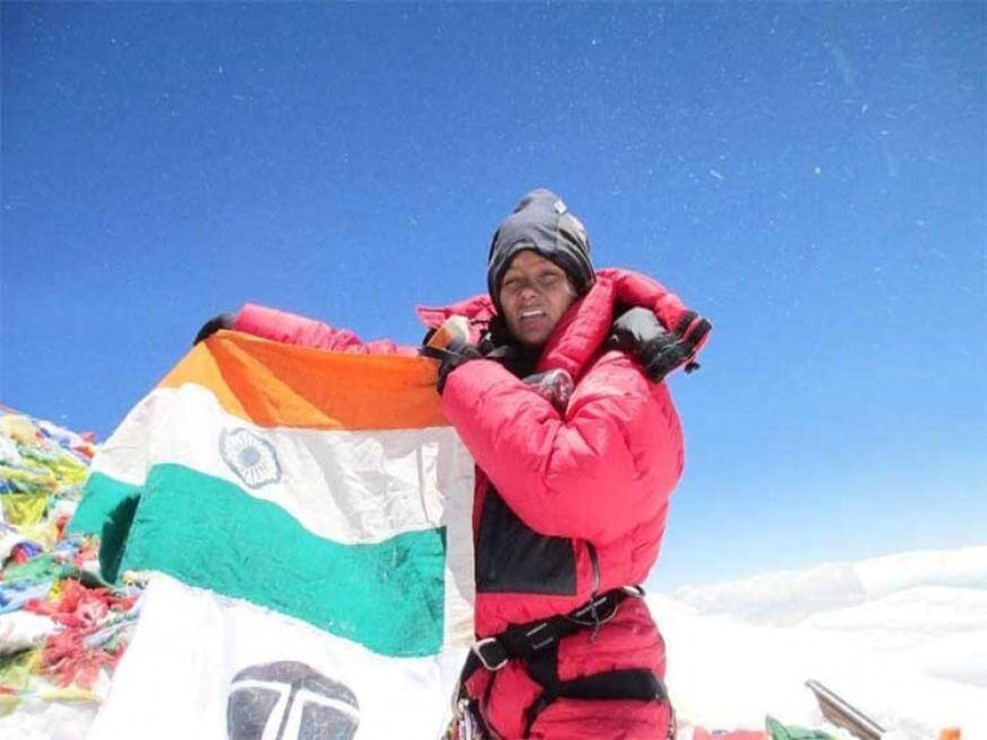
She first got the taste of mountaineering at the age of 12 when she was in her school. Pal received numerous honours for her accomplishments and contributions. In 1984, she was awarded the Padma Shri, in 1986, the Arjuna Award, in 1994, the National Adventure Award, and in 2019, the Padma Bhushan, among others.
Source:
NFHS 5 Report
In News
The National Family Health Survey (NFHS) 5 report has been recently released.
About the report
- The NFHS – 5 provides information on fertility, infant and child mortality, the practice of family planning, reproductive health, nutrition, anaemia, quality and utilisation of health and family planning services.
- Started in 1992-93, the National Family Health Survey has culminated in the fifth round 2019-21.
- The Ministry of Health and Family Welfare assigns the nodal responsibility for the task to the International Institute for Population Sciences (IIPS), Mumbai that collaborates with various field organisations and international agencies mainly USAID, DFID, UNICEF, and UNFPA which provide technical and financial assistance.
- The surveys provide essential data needed by the Ministry of Health and Family Welfare and other agencies for policy and programme purposes.
Population characteristics
- Drinking water: 96% of households use an improved source of drinking water that includes piped water, public taps, standpipes, tube wells, boreholes, protected dug wells and springs, rainwater, tanker truck, cart with small tank, bottled water, and community reverse osmosis (RO) plants.
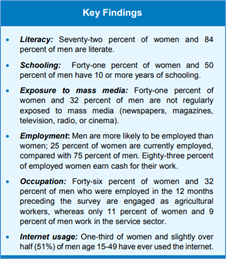
- Sanitation: 83% of households have access to a toilet facility; a much higher accessibility in urban areas (96%) than in rural areas (76%).
- The percentage of households practicing open defecation decreased from 39 % in 2015-16 to 19 %in 2019-21.
- Population Composition: India’s population is young, which is typical of developing countries with low life expectancy.
- Electricity and cooking fuel: 97% of households have electricity (95% of rural households and 99% of urban households).
- Only 59 %of households use clean fuel for cooking.
- School attendance: Overall, 72 % of females and 87 % of males aged six and over have ever attended school.
- The net attendance ratio falls from 83 % in primary school to 71 %in middle, secondary, and higher secondary school.
- The main reason given for not attending school was that the child is not interested in studies (36% for male children and 21% for female children).
- Employment: Since 2015-16, current employment levels have marginally increased for women. Twenty-four %of women were currently employed in 2015- 16, compared with 25 %in 2019-21. Among men, the proportion who are currently employed has not changed in the same period.
Fertility Characteristics
- India's total fertility rate (TFR) has declined from 2.2 in 2015-16 to 2.0 in 2019-21, indicating the significant progress of population control measures.
- The TFR is the average number of children born to a woman in her lifetime. TFR of 2.1 is considered the replacement level fertility rate at which population stability is achieved.
- There are wide inter-regional variations with five states still not having achieved a replacement level of fertility of 2.1. (Bihar (2.98), Meghalaya (2.91), Uttar Pradesh (2.35), Jharkhand (2.26) and Manipur (2.17)).
- Muslims’ fertility rate has seen the sharpest decline among all religious communities over the past two decades, remaining however, the highest among all religions.
- High fertility is mostly a result of non-religious factors such as levels of literacy, employment, income and access to health services.
- The NFHS 5 report said the number of children per woman declined with women’s level of schooling.
- Contraceptive use increases in communities and regions that have seen more socioeconomic progress.
- Men tend to marry considerably later than women in India. Early marriage has been declining over time.
Infant and Maternal Health
- The neonatal mortality rate declined from 49 deaths per 1,000 live births in the five years before the 1992-93 NFHS survey to 25 deaths per 1,000 live births in the five years before the 2019-21 NFHS survey.
- During the same period, the under-five mortality rate declined 62 %.
- The infant mortality rate decreased by 56 % over a period of 28 years.
- The under-five mortality rate is higher in rural areas than in urban areas. The under-five mortality rate also declines with increasing household wealth.
- In seven states, more than 90 per cent of the births in the last five years were institutional births. In Kerala, nearly 100 per cent of the births were institutional births. Only 46 per cent of the births in Nagaland were institutional births.
Child Health
- 77 % of children aged 12-23 months received all basic vaccinations at any time before the survey, and 67 % received all basic vaccinations by age 12 months.
- 36 % of children under age five years are stunted (short for their age); 19 % are wasted (thin for their height); 32 % are underweight (thin for their age); and 3 % are overweight (heavy for their height).
- The prevalence of undernutrition is almost the same among girls and boys.
- Stunting is higher among children in rural areas (37%) than urban areas (30%).
Adult Health
- Anaemia prevalence has increased between NFHS-4 and NFHS-5, from 53 % to 57 % among women and from 23 % to 25 % among men.
- The proportion of thin women age 15-49 declined from 23 %in NFHS4 to 19 %in NFHS5.
- The proportion of thin women decreases with age, wealth and urbaneness.
- Compared with NFHS-4, the prevalence of overweight or obesity has increased in most States/UTs in NFHS-5.
- The overall prevalence of medically treated tuberculosis decreased.
- The percentage of households in which at least one usual member is covered by health insurance or a health scheme increased.
Women Empowerment
- Employment among currently married women age 15-49 has marginally increased from 31 % in NFHS-4 to the current 32 percent.
- Women’s participation in decisions about their own earnings has slightly increased (from 82% to 85%) in the 4 years since NFHS-4.
- The percentage of women who have a bank or savings account that they themselves use has substantially increased from 53 % in NFHS-4 to 79 %in NFHS-5, as also the knowledge of micro credit.
- NFHS-5 indicates that in India, more men (60% house ownership) than women (42% house ownership) age 15-49 own property.
Question: Enumerate the status of Women empowerment, Populations characteristics and Child Health, as per the NFHS- 5 Survey.
Sources:
- National Family Health Survey (NFHS - 5)
- India's total fertility rate drops from 2.2 to 2.0, reveals NFHS-5 report
- Nearly One in Five Households in India Practise Open Defecation: NFHS-5 Data
- NFHS-5: One-fifth of women, nearly one-third of men comprehensively know about HIV/AIDS
- NFHS-5 data shows literacy and delivery of services, not religion, influences fertility
- NFHS-5 data: Total fertility rate dips, sharpest decline among Muslims
- NFHS-5: Half of households don’t seek govt health care
- More men eating non-veg than before: Health survey data
- Barring some, underage marriages down in most states: National Family Health Survey
- 89% children between 6-23 months don’t get adequate diet: NFHS
- Fertility falls, obesity goes up in India , says National Family Health Survey
- Alcohol consumption among men in India has decreased by 7% since 2015, finds NFHS-5 report
- How India fares on NFHS wealth index, in 5 charts
- In 7 charts: India's fertility rate
Carbon Capture device
This is image of a supercapacitor device, which is a Battery-like device that captures carbon dioxide while charging. Then, when it discharges, the carbon dioxide can be released in a controlled way and collected to be reused or disposed of responsibly.

The supercapacitor could help power carbon capture and storage technologies at much lower cost. The most advanced carbon capture technologies currently require large amounts of energy and are expensive. The supercapacitor consists of two electrodes of positive and negative charge. The team tried alternating from a negative to a positive voltage to extend the charging time from previous experiments. This improved the supercapacitor’s ability to capture carbon.
Source:
Endosulfan and Rotterdam Convention
- Context: The Supreme Court has recently directed the Kerala State Government to provide for relief to Endosulfan victims, in pursuance of Right to life under Article 21.
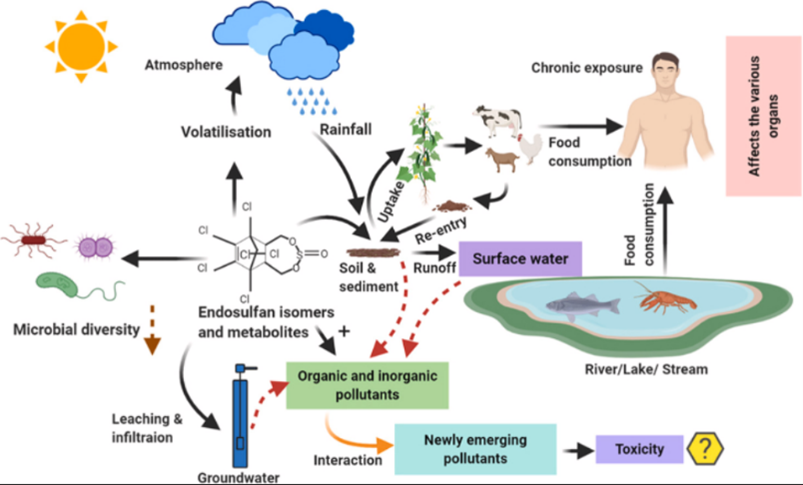
- Endosulfan is a restricted-use pesticide that is particularly effective against aphids, fruit worms, beetles, leafhoppers, moth larvae, and white flies on a wide variety of crops.
- In India, Endosulfan pesticide was used widely on crops like cashew, cotton, tea, paddy, fruits and others, until 2011, when the Supreme Court banned its production and distribution.
- This was because of the health effects of the chemical that included, neurotoxicity, late sexual maturity, physical deformities and poisoning.
- Endosulfan, has been listed by the Rotterdam Convention subject to the Prior Informed Consent (PIC) procedure since 2011.
- The Rotterdam Convention is an international treaty designed to facilitate informed decision-making by countries with regard to trade in hazardous chemicals.
- It establishes a list of covered chemicals and requires parties seeking to export a chemical on that list to first establish that the intended importing country has consented to the import.
Source:
- Tracking decades-long endosulfan tragedy in Kerala
- Linking international conventions with pesticide risk reduction in the field
- Kerala did virtually nothing for Endosulfan victims for 5 years: SC
Image source:
National Startup Advisory Council (NSAC)
- Context: The Minister of Commerce and Industry, Consumer Affairs, Food and Public Distribution and Textiles, recently chaired the 4th meeting of National Startup Advisory Council (NSAC).
- NSAC was constituted by the Department for Promotion of Industry and Internal Trade (DPIIT) in 2021, to drive sustainable economic growth and generate large-scale employment opportunities.
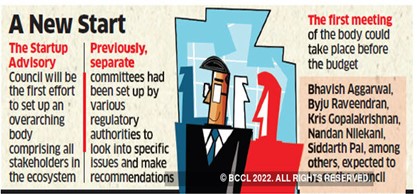
- The Minister for Commerce & Industry is the Chairman of NSAC and its ex-officio Members include nominees of the concerned Ministries/Departments/Organisations not below the rank of Joint Secretary.
- Besides the ex-officio members, the council has a number of non-official members, representing various stakeholders such as founders of successful startups, veterans who have grown and scaled companies in India, persons capable of representing the interest of investors into startups, etc.
- NSAC also has other roles as under:
- It will propose measures to enable a culture of innovation amongst Indian people (students in particular).
- Incubation and research assistance to support creative and innovative ideas.
- Provide solutions to improve productivity and efficiency and create an environment of absorption of innovation in the industry etc.
Source:
- Piyush Goyal chaired the first meeting of National Startup Advisory Council (NSAC)
- Role and Benefits of National Startup Advisory Council (NSAC)
Image source:
Sahariya Tribe
- Context: The recent record increase in prices of food items of basic staples like pulses and vegetables, have affected the Sahariya tribe.
- The Sahar, Sehariya, or Sahariya is an ethnic group in the state of Madhya Pradesh and some districts of Rajasthan.
- The etymology of "Sahariya " means "companion of the tiger".
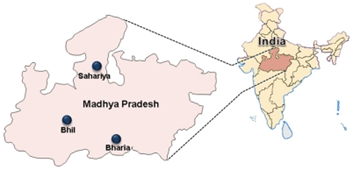
- They are classified as particularly vulnerable tribal groups (PVTGs).
- Agriculture is the predominant occupation of these tribes where wheat, jowar, bajra and maize are grown as the main cereal crops and gram, arhar are cultivated as the main pulses.
- They are expert woodsmen and collectors of minor forest produce (MFPs).
- They face a number of challenges such as poor community organizations, poor Outreach to government schemes and welfare programs, shrinking forest and natural resources, ineffective social protection and security, inadequate knowledge on natural resource management etc.
Source:
Image source:
Seoul Forest Declaration
- Context: Recently, the Seoul Declaration was adopted at the XV World Forestry Congress, held in Seoul, South Korea.
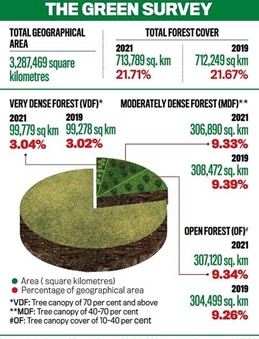
- The declaration urges thatresponsibility for forests should be shared and integrated across institutions, sectors and stakeholders.
- It underlines the fact that forests transcend political, social and environmental boundariesand are vital for biodiversity and the carbon, water and energy cycles at a planetary scale.
- It also underscores on how forests can help combat the multiple crises humanity faces, including climate change, biodiversity loss, land degradation, hunger and poverty.
- The Declaration, signed by 141 participant countries.
- The other priority areas for actions under the Seoul Forest Declaration 2022 include:
- Tripling Investment in forest and landscape restoration globally.
- Innovative green financing mechanisms to upscale investment in forest conservation and restoration.
- Development and use of emerging innovative technologies and mechanisms to enable evidence-based forest and landscape decision making.
Source:
The potential impact of the Supreme Court’s GST Council ruling: Live Mint
Essence: Constitution of India provides taxation powers to both Union and state governments. GST was enacted to bring most of indirect taxes falling in the domain of Union and states into a single tax structure. The GST Council was formed as a constitutional body entrusted with the task of providing advice and recommendations on matters of GST in India.
Recent Supreme Court judgment held that the GST Council’s suggestions are mere recommendations and have only persuasive value. Verdict serves as a reminder that both the Center and States have equal authority to legislate on GST. Anything otherwise will be going against the “cooperative" and “fiscal" federalism. This also serves as a reminder that Council’s proposals must be guided by the need to collaborate rather than attempt to arrive at a solution by the power of majority.
After this verdict centre and states are expected to act with responsibility so that the structure of “one-country-one-tax” continues to flourish and business of taxpayers working in multiple states is not impacted.
Why should you read this article?
- To understand implications of the Supreme Court judgment on the GST council for Indian polity and economy.
Source:
Can agriculture exports be made more sustainable: Indian Express
Essence: The editorial provides an insight into India's agricultural exports, which have risen to $50bn in 2021-22. Major exports from agriculture domain are rice, marine products, spices, sugar and bovine products. The government provides huge subsidy in water and fertilizer to export rice and sugar, which is unsustainable. Rice and sugar are water guzzling crops. To add to it, India has been exporting rice at lesser profitable prices. This results in net export of virtual water, which is highly untenable. Such subsidized export programs do come under WTO scanner as well. Moreover, rice cultivation leads to methane emission.
What's required is to provide basic income to farmers with minimum land so that they could diversify agricultural base. Scheme to improve water use efficiency, alternate dry-wetting of land, direct seeded rice should be tried to make agriculture export tenable.
Why should you read this article?
- To know about the unsustainable nature of India’s agricultural exports.
- To understand the viable mode of export of agriculture from India.
Source:
Time for us to work out a universal basic income: LiveMint
Essence: The editorial focuses on the need for universal basic income program in India during the present times. Extreme poverty might have reduced but inequality in India has grown. Slowing down of economy since 2018 and impact of covid (k shaped recovery) has led millions jobless. This mandates an urban job guarantee program on the lines of MNREGS. Inflation has further marginalized the earnings of vulnerable and informal class.
To counter the above challenges, India needs to initiate a leak-proof transfer for all adults. Calculations suggest the need of 12 L Cr to distribute Rs 1,000/- to each adult per month. Though it might seem to be a humungous amount as of now, the indirect benefits, increase in inflow of revenue might be able to handle these expenses. Inefficient fiscal expenses, restricting to the non-needy could be steps to proceed with the program. Behavioral effects of universal basic income transfer have suggested minimal drop in labor supply and proportionally higher income boost.
Why should you read this article?
- To know about the urgent need of universal basic income program
- To understand the impact of such a program in India
Source:
Water Champion of Gujarat
Background
Conservation and effective water management initiatives in the tribal hinterlands of Dang, Narmada, and Bharuch—three of Gujarat's six economically disadvantaged districts—have resulted in scores of water-stressed communities becoming ‘water champion’ as a result of Neeta Patel's 12-year-long work.
How Neeta became the Water Champion?
- Neeta reaches out to distant Adivasi padas where she mobilises thousands of women, raises water-related concerns with Panchayats, erects water harvesting structures, and establishes water committees.
- Every day, Neeta travels from village to village on a two-wheeler, covering 80km to 90km at times.
- With the help of locals, she has been able to construct dozens of check dams, group wells, trenches, check walls, and boribundhs (sand-filled bags) on the Purna, Khapri, Ambika, Gira, and Dhodhad rivers in Dang
- Patel's efforts have resulted in the establishment of 'Pani Samitis' operated by women in various villages that work in collaboration with the Panchayat to tackle the communities' water challenges.
- Her work on water conservation and women's empowerment has influenced the lives of nearly 30,000 people scattered across 51 villages in these districts and others in hundreds of villages throughout Gujarat's southern region.
Quote: “All the water that will ever be is, right now.” – National Geographic
Source:
Share the article
Get Latest Updates on Offers, Event dates, and free Mentorship sessions.

Get in touch with our Expert Academic Counsellors 👋
FAQs
UPSC Daily Current Affairs focuses on learning current events on a daily basis. An aspirant needs to study regular and updated information about current events, news, and relevant topics that are important for UPSC aspirants. It covers national and international affairs, government policies, socio-economic issues, science and technology advancements, and more.
UPSC Daily Current Affairs provides aspirants with a concise and comprehensive overview of the latest happenings and developments across various fields. It helps aspirants stay updated with current affairs and provides them with valuable insights and analysis, which are essential for answering questions in the UPSC examinations. It enhances their knowledge, analytical skills, and ability to connect current affairs with the UPSC syllabus.
UPSC Daily Current Affairs covers a wide range of topics, including politics, economics, science and technology, environment, social issues, governance, international relations, and more. It offers news summaries, in-depth analyses, editorials, opinion pieces, and relevant study materials. It also provides practice questions and quizzes to help aspirants test their understanding of current affairs.
Edukemy's UPSC Daily Current Affairs can be accessed through:
- UPSC Daily Current Affairs can be accessed through Current Affairs tab at the top of the Main Page of Edukemy.
- Edukemy Mobile app: The Daily Current Affairs can also be access through Edukemy Mobile App.
- Social media: Follow Edukemy’s official social media accounts or pages that provide UPSC Daily Current Affairs updates, including Facebook, Twitter, or Telegram channels.

